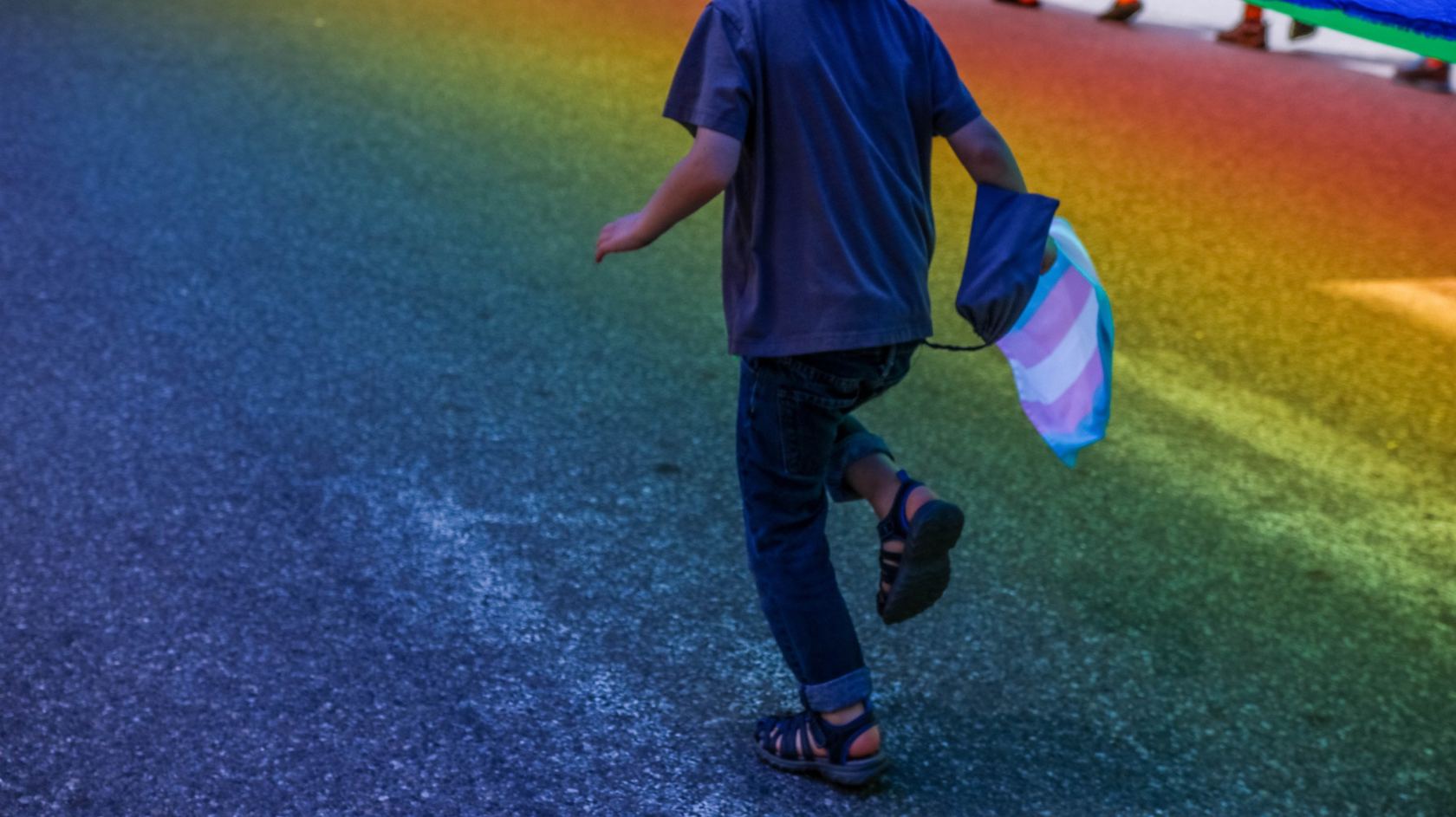Adolescence is a critical time of growth, self-discovery, and, unfortunately, significant challenges. Some teens struggle with behavioral issues, emotional regulation, mental health disorders, and unhealthy coping mechanisms that interfere with their daily lives. When...
Recent Posts
After Residential Treatment: Helping Teens Transition Back Home
Residential treatment can be life-changing for a teen struggling with mental health, trauma, or behavioral challenges. But what happens after your child returns home? The transition back to daily life is a critical period — one that requires patience, structure, and...
How Residential Treatment Supports Teens with Co-Occurring Disorders
Navigating adolescence is challenging enough, but for teens grappling with co-occurring disorders, the journey can feel insurmountable. Co-occurring disorders, also known as dual diagnoses, refer to the presence of two health disorders occurring at the same time....
A Parent’s Guide To Navigating Grief In Teenagers
Grief is a complex emotion that can be challenging for teens to navigate. According to the Childhood Bereavement Estimation Model (CBEM), 1 in 12 children and teens in the U.S. will experience the death of a parent or sibling by age 18. While grief is usually...
How Long Is Residential Treatment for Teens?
If your child is about to begin a stay at a residential treatment center, you’re bound to have a lot of questions. What types of therapy will be involved? Will our family be allowed to visit? And, of course, how long is a teen residential treatment program? In this...
Is Residential Treatment Considered Inpatient or Outpatient?
If you’ve never engaged with residential treatment centers before, it’s common to ask: is residential treatment considered inpatient or outpatient? Well, the answer is simple: our residential teen treatment centers are considered inpatient because teens stay at our...
Benefits of Residential Treatment for Teens: When to Choose It Over Other Treatment Programs
When seeking help for your teen, it’s important to know the benefits of residential treatment teens can take advantage of. For teens suffering from mental health disorders, behavioral disorders, psychological disorders, or addiction issues, there are a variety of...
Does Insurance Cover Teen Residential Treatment?
How Much Does Residential Treatment Cost? Cost of Residential Treatment The cost of residential treatment varies between each Residential Treatment Center (RTC). It may range from free (which is very uncommon) to tens of thousands of dollars per month. And if you are...
3% of Teens Identify as Transgender or Gender Nonconforming in America
How Many Transgender Teens Are There? Approximately 150,000 American teens (ages 13 to 17) identify as transgender in the United States today. Of course, there is no general age in which people typically “discover” or “come out” as transgender. Nonetheless, more and...
Recognizing Signs of Teen Depression: A Guide for Parents
It is very common for children and adolescents to experience occasional moodiness or periods of sadness. The causes of teen depression are multifaceted, involving biological, environmental, and social factors such as bullying, mental health conditions, stressful life...
Distinguishing Between Signs of Depression or “Moodiness” in Teens
Parents often wonder how to distinguish normal teenage mood swings and rebellions from actual symptoms of depression. Fortunately, there are several ways to tell. As many as 1 in 5 teenagers will experience depression at some point during adolescence. Unfortunately,...
Social Anxiety Disorder in Teens: Signs, Symptoms, and How to Help
What is Social Anxiety Disorder? Social anxiety disorder (SAD) affects 1 out of 3 adolescents between 13 and 18 years old. Over 19 million people across America suffer from social anxiety disorder (SAD) today, including a significant number of young adults. It is...
Teen Depression Prevention: Parent, Friend, and Support Tips
At any given time, one out of every five teenagers is experiencing major depression. If you are a parent to an adolescent or teenager, you are likely familiar with the moodiness inherent to this age group. Mood swings are common, as teens are experiencing a vast...
How to Talk to Your Teen About Depression
Teen depression is more common — and more serious — than many parents realize. While emotional ups and downs are a normal part of adolescence, persistent sadness, irritability, or withdrawal may point to something deeper. Knowing how to talk to your teenager about...
Managing Expectations With Teens
As a parent of an adolescent, teen, or young adult, your attitudes, actions, and beliefs can have a tremendous impact on your child’s well-being. Your teen is experiencing the challenging process of transitioning from childhood to adulthood. As someone who has gone...
Can Anxiety Cause Depression in Teens?

When a person suffers from two or more mental health conditions, they are referred to as “comorbid” or co-occurring disorders. Anxiety and depression are the two diagnoses most closely related, and for adolescents and teenagers, the two mental health disorders most commonly assigned together. Anxiety and depression can be difficult to cope with and manage at any age. Yet for young people dealing with both mental health disorders (at the same time) the symptoms can be overwhelming, cause significant distress, and impact all areas of life.
What Is Anxiety?
Anxiety is a general term for the many disorders that cause worry, nervousness, apprehension, and fear. The various types of anxiety disorders not only cause emotional and cognitive symptoms, but can also manifest in physical ways, such as increased blood pressure, tension headaches, and/or gastrointestinal upset. Anxiety disorders are typically classified into six main types including:
- Generalized anxiety disorder (GAD) – the most common type of anxiety is generalized anxiety disorder, which is characterized by ongoing and long-lasting worry. Those with generalized anxiety disorder are often unable to identify a cause for the anxiety.
- Social anxiety disorder – social anxiety disorder is marked by fear of social situations, including fear of public embarrassment and/or fear of being judged negatively by others.
- Obsessive-compulsive disorder (OCD) – one of the more unique anxiety disorders, OCD sufferers have repetitive and intrusive thoughts or behaviors.
- Post-traumatic stress disorder (PTSD) – this type of anxiety is usually the result of experiencing trauma (i.e. – emotional/physical/sexual abuse, combat, serious accident, etc.).
- Separation anxiety disorder – marked by high levels of anxiety when separated from a particular person/place to which an individual is attached to, separation anxiety disorder can often result in panic symptoms.
- Panic Disorder – sudden attacks of intense fear or terror are inherent for those who suffer from panic disorder. These attacks tend to come on quickly (often without a clear trigger) and can last anywhere from a few minutes to a few hours.
It is estimated approximately 15-20% of adolescents and teenagers meet criteria for at least one anxiety disorder.
General Symptoms of Anxiety in Adolescents and Teenagers
- Restlessness or nervousness
- Increased heart rate and/or breathing
- Lethargy
- Rapid breathing patterns or hyperventilation
- Gastrointestinal issues
- Avoidance (of things that trigger anxiety)
- Changes in eating and/or sleeping patterns
What Is Depression?
Depression refers to a serious mental illness and mood disorder that can cause persistent feelings of sadness, hopelessness, and/or loss of interest. Depression is more than just the “blues” or occasional sadness that all people feel at some point throughout life. Depression can take on many forms in teens, with the four most common being:
- Major Depression – also called clinical depression, major depression manifests in adolescents and teenagers as feelings of sadness (lasting longer than 2 weeks). Other typical signs of major depression in teens are difficulty concentrating, changes in sleep and/or eating habits, lack of interest in previously enjoyed activities, and social isolation.
- Dysthymia – dysthymia, also called persistent depressive disorder, is a long-term, chronic form of depression. Dysthymia often presents many of the same symptoms as major depression, but they tend to be less severe. To be diagnosed with dysthymia, an adolescent or teen must experience ongoing “low mood” for at least two years.
- Adjustment Disorder with Depressed Mood – this form of depression occurs much more frequently in adolescents/teens than in adults. Adjustment disorder usually develops within three months following a life change or event. These life events or life changes can vary in intensity – anything from a breakup with a boyfriend/girlfriend to the death of a family member.
- Bipolar Disorder – bipolar disorder in adolescents and teens is often described as a sort of teeter-tooter in that they experience periods of elevated mood (sometimes very extreme) followed by periods of low mood.
General Symptoms of Depression in Adolescents and Teenagers
- Irritable mood
- Changes in sleep and/or eating habits (including weight loss or weight gain)
- Low self-esteem
- Slowed speech and/or thinking
- Difficulty concentrating
- Loss of energy
- Frequent crying episodes
- Drastic mood swings
- Low self-esteem
- Physical aches and pains (unexplained by other health issues)
- Thoughts of self-harm, death, and/or suicide
Link Between Anxiety and Depression
For teens and adolescents, anxiety disorders and depression frequently manifest together. The symptoms of both tend to overlap to some extent, and end up presenting similarly, especially in adolescents and teens (insomnia, agitation, trouble focusing, ongoing worry). This overlap in symptomology can make the diagnostic process difficult in terms of deciphering if the person is suffering from anxiety, depression, or both.
The connection between the symptoms of anxiety and depression is so strong that some antidepressants (typically prescribed for those with some form of depression) are often given to individuals diagnosed with anxiety (that do not suffer from depression at all). In the same respect, coping skills and tools taught for individuals with anxiety are frequently recommended for those with depression (even when that person does not have an anxiety disorder). Additionally, many studies evidence several of the same neurotransmitters lead to both depression and anxiety.
Of course, comorbid anxiety and depression tend to have strong effects on one another, in that the presence of depressive symptoms may lead to an increase in anxiety symptoms, and vice versa. Teenagers who struggle with anxiety are at an increased risk of developing depression. In fact, having an anxiety disorder is the most significant predictor that a young person will develop depression. There have been many studies on the comorbidity of anxiety and depression in adolescents and teenagers that show anxiety is almost always the “predictor,” with depression as the “outcome.” This means that typically, teens and adolescents who struggle with both depression and anxiety, most likely suffered with anxiety first, and the depression developed sometime later. Some studies show this to be particularly true when it comes to females. Interestingly, there is far less evidence of depression preceding anxiety.
The likelihood of depression developing after anxiety could be due to the impact ongoing anxious thoughts can have on one’s general mental health and overall outlook on life. This seems to be particularly true for those with panic disorder, as panic attacks tend to trigger feelings of fear, helplessness, and catastrophe.
Treatment for Anxiety and Depression in Teens
The prognosis of comorbid anxiety and depression is worse than either condition alone, with an increased risk of recurrence, higher risk of suicide, greater impairment, and longer duration.
Thankfully, comorbid anxiety and depression in adolescents and teenagers is treatable, especially if caught early. The most commonly used approach for treating both anxiety and depression is cognitive-behavioral therapy (CBT). Cognitive-behavioral therapy teaches individuals to catch and challenge negative thoughts, recognize unhealthy patterns of behavior, and identify helpful ways to cope with the difficult symptoms of depression and anxiety.
If the depression, anxiety, or both are on the more severe side, medication may also be incorporated into the treatment plan.
For more information on how Polaris Teen Center can help your teen, please contact our admissions department or call 1-844-836-0222.
Polaris Teen Center is a residential treatment facility for teens and adolescents suffering from severe mental health disorders. Our highly accredited facility is fully licensed and certified in Trauma Informed Care and is a part of the Behavioral Health Association of Providers (formerly AATA).
Previous Post
Next Post
Related Posts
After Residential Treatment: Helping Teens Transition Back Home
Residential treatment can be life-changing for a teen struggling with mental health, trauma, or behavioral challenges. But what happens after your child returns home? The transition back to daily life is a critical period — one that requires patience, structure, and...
A Parent’s Guide To Navigating Grief In Teenagers
Grief is a complex emotion that can be challenging for teens to navigate. According to the Childhood Bereavement Estimation Model (CBEM), 1 in 12 children and teens in the U.S. will experience the death of a parent or sibling by age 18. While grief is usually...
Benefits of Residential Treatment for Teens: When to Choose It Over Other Treatment Programs
When seeking help for your teen, it’s important to know the benefits of residential treatment teens can take advantage of. For teens suffering from mental health disorders, behavioral disorders, psychological disorders, or addiction issues, there are a variety of...
Does Insurance Cover Teen Residential Treatment?
How Much Does Residential Treatment Cost? Cost of Residential Treatment The cost of residential treatment varies between each Residential Treatment Center (RTC). It may range from free (which is very uncommon) to tens of thousands of dollars per month. And if you are...
3% of Teens Identify as Transgender or Gender Nonconforming in America
How Many Transgender Teens Are There? Approximately 150,000 American teens (ages 13 to 17) identify as transgender in the United States today. Of course, there is no general age in which people typically “discover” or “come out” as transgender. Nonetheless, more and...
Recognizing Signs of Teen Depression: A Guide for Parents
It is very common for children and adolescents to experience occasional moodiness or periods of sadness. The causes of teen depression are multifaceted, involving biological, environmental, and social factors such as bullying, mental health conditions, stressful life...
Distinguishing Between Signs of Depression or “Moodiness” in Teens
Parents often wonder how to distinguish normal teenage mood swings and rebellions from actual symptoms of depression. Fortunately, there are several ways to tell. As many as 1 in 5 teenagers will experience depression at some point during adolescence. Unfortunately,...
Social Anxiety Disorder in Teens: Signs, Symptoms, and How to Help
What is Social Anxiety Disorder? Social anxiety disorder (SAD) affects 1 out of 3 adolescents between 13 and 18 years old. Over 19 million people across America suffer from social anxiety disorder (SAD) today, including a significant number of young adults. It is...
Teen Depression Prevention: Parent, Friend, and Support Tips
At any given time, one out of every five teenagers is experiencing major depression. If you are a parent to an adolescent or teenager, you are likely familiar with the moodiness inherent to this age group. Mood swings are common, as teens are experiencing a vast...







